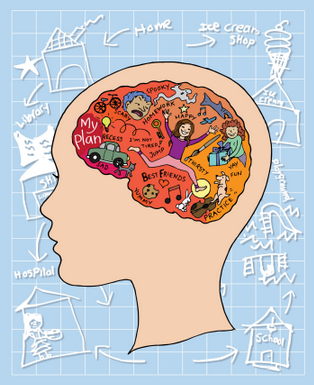Before I was a mom, I thought I could control most everything in my life, and for the most part I did. I was the lead in the school play, the president of student council, and the girlfriend to the dreamy boy who sat in front of me in math. But “luck is the residue of design,” as baseball pioneer, Branch Rickey, observed. “Things worthwhile generally don’t just happen.” With every achievement, I had failure, tears, and lots of hard work along the way. I cried when my name was not on the casting list many times before I got the lead, I lost more than one election before winning the “big one” in high school, and I ached for the boy who sat in front me in math for a year before he asked me on my first date.
Before I was a mom, I did not know the frustration, pain, and exhilaration that comes when you cannot control major parts of your life, despite trying obsessively, such as when I would become pregnant, whether I would successfully give birth, and at what cost. It rocked my world to discover that I could not orchestrate these events in my life, and perhaps this was the beginning of my preparation for Motherhood.
What I have learned in my fleeting eleven years as a mom is that the act of letting my children map out their own paths, even when it means failure, does not come easily. Yet they too need to learn, through hard work, practice, and failure, how to navigate their own lives, and to develop resilience for when things don’t go their way. This is in part how little BLUEPRINT, a company I created to empower children, came about. Many years of research on child development and brain science, and motherhood itself, have taught me a simple, but fundamental concept: Children need to practice making their own plans from the earliest ages, which often means that parents must relinquish some control.
When children practice planning, it is like learning to ride a bike without falling over every time you hit a bump in the road. We as parents are not always there to steer the bike, but children need early and regular practice to learn a feel for the road. From anything as simple as a plan for getting by on the playground to a plan as profound as mourning the death of a grandparent, children need to be empowered to create their own plans. It is through this practice of planning that children learn effectively to L.E.A.D.: to integrate Logic and Emotions to Analyze and make Decisions.
The brain’s executive function – essentially, the ability to control behavior, to plan effectively, and to behave proactively (instead of responsively) – is rooted in the top part of the brain, but requires concerted action among the brain’s key systems. Combining logic, emotion, analysis, and decision-making to develop plans integrates these key systems of the brain, thereby strengthening executive function through practice. Executive function is now widely viewed as a strong predictor of children’s success in school and in life, beyond any IQ score or standardized test results.
And so, when I find myself about to dictate to my daughter that she cannot sign up to post photographs of herself on Instagram, I stop and take a different approach. Instead, I ask her to write me an essay on her plan for using Instagram, explaining her understanding of the dangers, and why she thinks she is ready for this responsibility. Maybe this time her essay will carry the day, and maybe it won’t. But regardless, she will learn from trying. And, if her request is granted, she will have developed a proactive plan to protect herself by acting responsibly. By teaching anticipatory behavior, but not handing her the plan, she is developing the skills to successfully navigate situations independently.
Similarly, for my younger ones, when I lose patience at bedtime because I know how critical sleep is to my children’s growth and brain development, I remind myself that they need to be a part of the bedtime plan. I take a step back and help them (1) learn facts about the importance of sleep; (2) examine how they feel when their body is tired, why I am impatient when they don’t go to bed, and what is hard about saying goodnight; (3) analyze possibilities for a bedtime plan, including writing or drawing in a journal, learning calming techniques such as a bedtime chat with breathing exercises, or reading together for a set time before bed; and (4) decide on their own plan for bedtime. It may have been simpler to announce the rules and enforce them or more fun to stay up and cuddle together until my children fall asleep (I’ve tried both). But by empowering children to create their own plans, we give them a sense of control, challenge them to take responsibility for achieving a goal, and strengthen their brains in the process.
The beauty of teaching children to develop their own plans is that when there is failure and hardship along the way, that too becomes part of the intentional journey of growth. But sometimes it’s hard to be an observer from the sidelines. The part of Motherhood that involves letting go of control is something to which I am still adjusting. I confessed to a close friend recently that I don’t want to be THAT kind of controlling mother-in-law one day, who is always giving unsolicited parenting advice.
“Oh don’t worry,” she reassured me, “you will.”
Katherine Eskovitz began her career as a trial lawyer. A graduate of Yale Law School and Cornell University, Katherine practiced law for seventeen years as a federal prosecutor and partner in a national law firm before turning her courtroom skills, and experience as a former speechwriter, to writing for a new audience: children. Katherine’s Have a Plan Books, available at www.littleBLUEPRINT.com, are the result of years of research on child development and brain science, writing and collaboration with experts, and passion for photography. A native New Yorker, Katherine lives in Santa Monica, California with her husband and three children.














Leave A Comment
You must be logged in to post a comment.